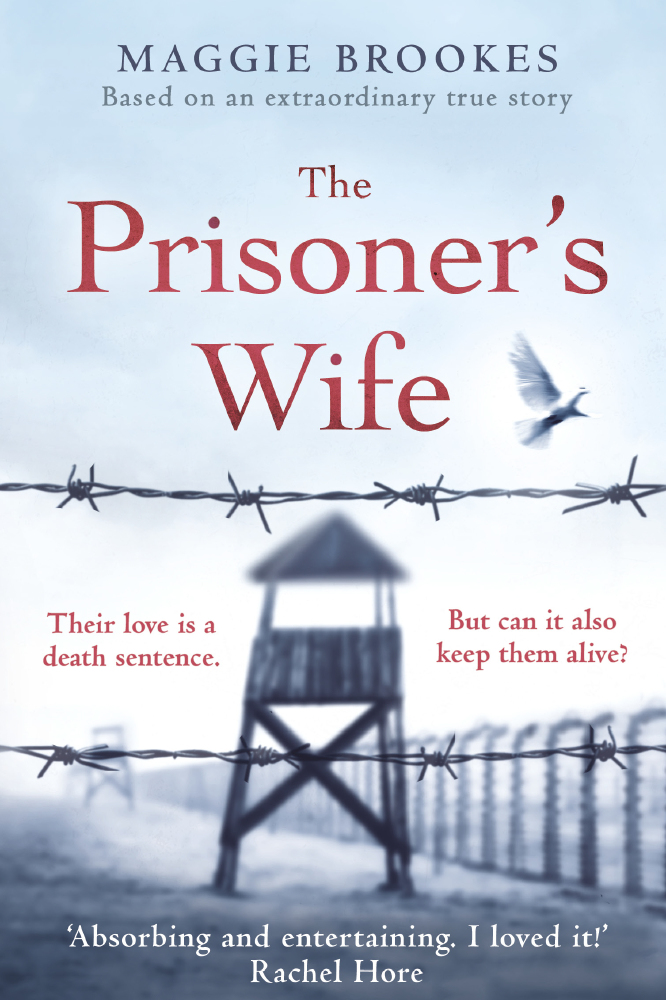I never expected to write a big historical novel. I never had any urge to write about the Second World War either, but one day I was in the lift at my mother’s sheltered housing when an elderly gentleman called Sidney Reed said, “I bet I could tell you a story about the war which would make your hair stand on end.” I couldn’t wait to hear more.

The Prisoner's Wife
Sidney told me that he had been at Lamsdorf Prisoner of War Camp in Czechoslovakia when two escaped prisoners were brought in. When the Nazi guards had left, one of the prisoners pointed to his companion and said, “He isn’t a British soldier, he’s my Czech wife!” There was uproar in the hut, but when it calmed down, the other prisoners decided to hide her in plain sight. She remained a Nazi prisoner, dressed as a man with these men protecting her identity, for the last six months of the war.
This was the most extraordinary story I had ever heard, and I knew that the story of these two amazing people needed to be told. While I had always considered myself a writer, and found many journalistic techniques helpful, I also learned many lessons about writing historical fiction along the way that any aspiring historical author could use.
Lesson One: Never let a good story pass you by.
As a writer, your greatest tool is your curiosity. Talk to people, ask them to tell you their most amazing stories, especially people from older generations. And try not to be shy. I went back to see Sidney several times and took notes about everything he could remember, including how the young Czech woman coped with her periods and how they protected her from the guards. However, this information only amounted to only a few pages. I knew I needed much more.
Lesson Two: Find all the primary and secondary sources you can and work hard to understand the historical facts.
Many years before writing The Prisoner’s Wife, I’d made historical documentaries for the BBC, so I knew how to go about the research I needed.
First you need to find the primary (first-hand) sources. I joined the Lamsdorf Association in the hope to track down other survivors who might want to share their story, then looked for prisoner’s diaries, memoirs and photographs. Rather remarkably, I was given access to war time diaries that revealed my own father’s time as a POW and I pulled many facts from that. I even gave dad’s wartime hobbies of knitting and whittling to my characters.
Then find secondary (printed) sources: I spent a lot of time at the archives of the Imperial War Museum, the National Archive at Kew and the British Library, which are all open to the public. My understanding of the events of the last months of the war were hazy and needed clarifying. As I read books and took endless notes, the jigsaw pieces began to fall into place.
Lesson Three: Go to see for yourself.
Nothing quite beats being where real life events happened to lend authenticity to your writing, so go to visit if you can. For example, I had never heard of The Long March across Europe as the Nazis force-marched hundreds of thousands of prisoners for 500 miles in freezing conditions. The more I read, the more impossible it seemed that I could write this novel, so I decided I needed to see for myself. I went to the Czech Republic and Lamsdorf in Poland, and my husband drove the route of The Long March as I took notes and photographs, searching for locations to write about, seeing the countryside and walking through a snow-storm to bring authenticity to my writing.
Lesson Four: Set aside the research to focus on the characters and the narrative.
On my return, I sat down to write. But all the research in the world cannot make up for lifeless characters, and so to me what mattered most was getting inside the head of Izzy, the Czech farm girl, and creating believable characters who would support her on her terrifying journey. I produced a synopsis which identified all the plot-points on the narrative arc, and wrote detailed character profiles, but essentially the characters grew as they began to talk and interact in the early drafts. Sometimes the best thing to do is start writing and let the characters speak to you. You can always edit later.
Lesson Five: Listen to feedback from readers, experts and editors.
This is the scariest phase. I began to show my novel to people for feedback, and though my initial reaction was often to think their criticisms were wrong, I learned that they usually had a useful contribution. I did rigorous fact-checking. I asked overseas museum curators I’d never met to read my book and they were happy to oblige. Don’t be afraid to ask experts for their opinions: they’re usually happy to do so and your book can only benefit. In the end I wrote 17 drafts, and the structure changed considerably over the course of the redrafting.
Lesson Six: Believe you can do it.
Even when it seems impossible, don’t give up.
Maggie Brookes is the author of The Prisoner’s Wife, out now in paperback, published by Arrow Publishing, £7.99.

